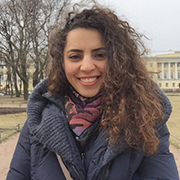A .gov website belongs to an official government organization in the United States.
A lock () or https:// means you've safely connected to the .gov website. Share sensitive information only on official, secure websites.

Atmospheric new particle formation is a globally observed phenomenon acting as the dominating contributor to aerosol particle number concentrations. Even in megacities, new particle formation is very common despite the high concentration of pre-existing aerosol particles. Based on the paradigm shift connecting the new particle formation and haze, which were traditionally thought of as two relatively separate phenomena, we try to explain the processes from NPF to haze via gas-to-particle conversion followed by growth to mass relevant sizes. In order to do so, we utilize a full set of state-of-the-art instrumentation in the heart of one of the world's most exposed cities to the frequent and intensive haze episodes: Beijing, China.
Using inter-disciplinary comprehensive observations between 15 January 2018 and 31 March 2019, we find that almost all haze episodes in Beijing were preceded by a new particle formation (NPF) event. We are able to show that 80–90 % of the aerosol mass was formed via atmospheric reactions during the haze days and over 65 % of the number concentration of haze particles resulted from the growth of particles formed through NPF. On the connection between NPF and haze formation, we find that the haze formed faster when the number concentration of newly formed particles was enhanced. Our findings suggest that in practice almost all present-day haze episodes originate from NPF, mainly since the direct emissions of primary particles in Beijing have considerably decreased during the recent years with no effect on haze frequency or intensity. By addressing the core of the problem, we are able to provide possible solutions to mitigate the haze episodes which would be crucial for the people living in the heavily polluted environments.
Dr. Lubna Dada is a research scientist at the Institute of Atmospheric and Earth System Research at the University of Helsinki. She earned a B.S. in Chemistry and M.S. in Atmospheric Analytical Chemistry from American University of Beirut, followed by a Ph.D. in Atmospheric Sciences from the University of Helsinki. Her research interests include new particle formation and chamber experiments.
ALL Seminar attendees agree not to cite, quote, copy, or distribute material presented without the explicit written consent of the seminar presenter. Any opinions expressed in this seminar are those of the speaker alone and do not necessarily reflect the opinions of NOAA or CSL.